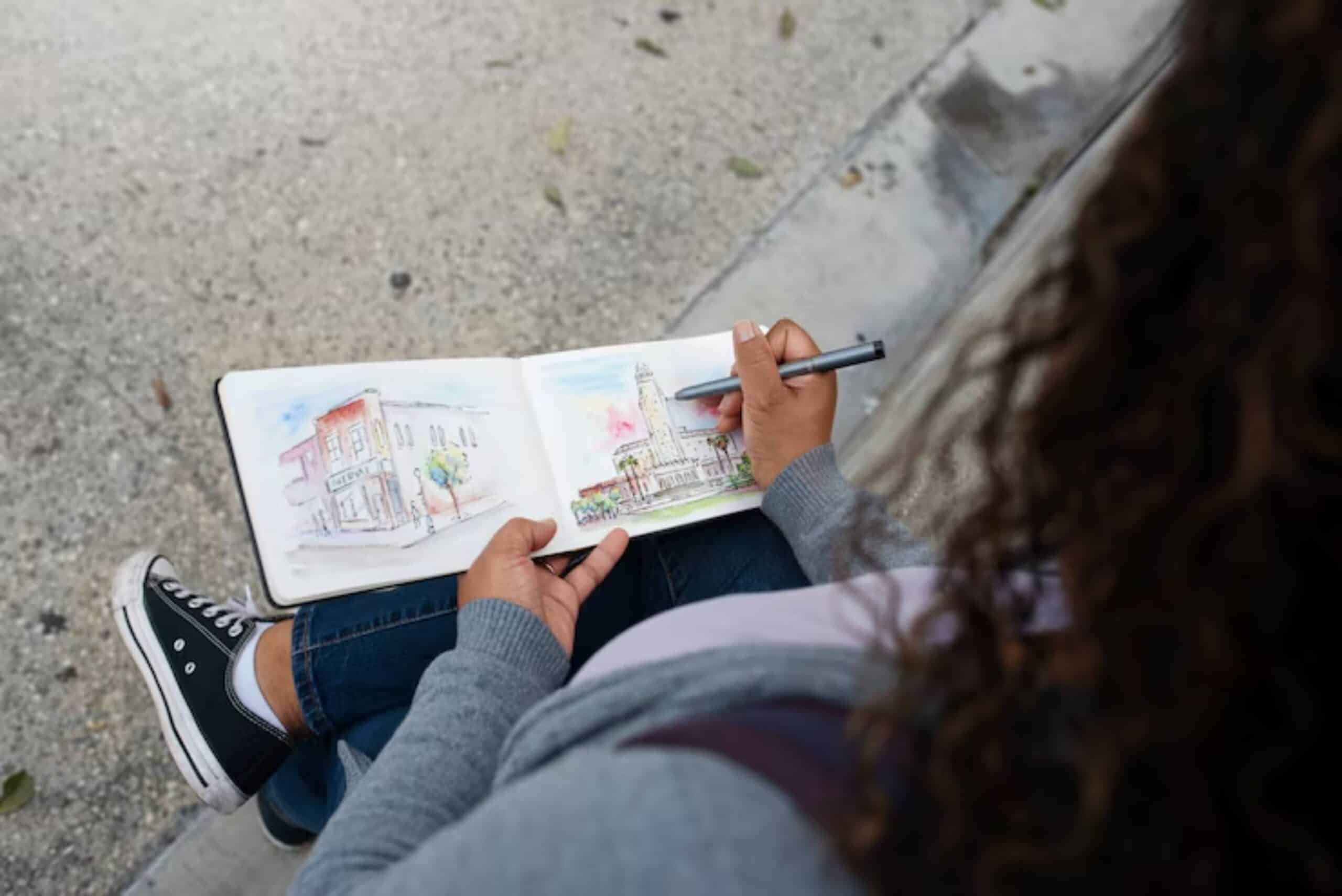
Combining Sketching and Writing for Deep Reflection
Sometimes, words alone can’t quite capture the depth of what you’re feeling — and sometimes, sketches alone don’t say enough either. That’s where the beautiful practice of combining sketching and writing steps in, allowing you to unlock deeper layers of self-awareness, emotional clarity, and creative insight.
Sketch journaling offers a unique blend of reflective art practices and expressive writing that taps into both the analytical and intuitive sides of your brain. By merging visuals and words, you create a richer, fuller picture of your inner world, leading to true clarity through creativity.
In this guide, we’ll explore why sketch-and-write journaling works so powerfully, share inspiring techniques to get you started, and show how you can use this hybrid practice to deepen your reflections, manage stress, and discover hidden truths about yourself.
Let’s dive in and let your pen — and pencil—lead the way.
What is Sketch Journaling?
A Definition
Sketch journaling is the practice of combining quick drawings, doodles, diagrams, or visual metaphors with written reflections in a single journal or page. It’s not about creating “art” in the traditional sense — it’s about visual thinking and emotional exploration.
Typical Elements:
- Rough sketches, doodles, or abstract shapes
- Short narratives, reflections, or quotes
- Collages mixed with handwritten notes
- Symbolic imagery paired with emotional insights
“Drawing is another way of writing, I guess.” — Jean-Michel Basquiat

Why Combining Sketching and Writing Deepens Reflection
1. Engages Both Hemispheres of the Brain
Sketching activates the brain’s right hemisphere (creativity, emotion), while writing taps into the left (logic, language). Using both helps you access a fuller, more nuanced self-understanding.
2. Expresses the Inexpressible
Some feelings are too complex for words alone. A quick sketch can express layers of emotion that paragraphs may struggle to capture.
Example: A stormy scribble over a short journal entry about anger can provide immediate emotional context.
3. Enhances Memory and Insight
Studies from the Journal of Cognitive Neuroscience show that drawing concepts rather than just writing them significantly improves understanding and retention.
Health and Emotional Benefits of Sketch Journaling
- Reduces stress and anxiety: Expressing emotions creatively eases emotional tension.
- Increases emotional intelligence: Visual metaphors reveal underlying patterns and feelings.
- Boosts mindfulness: Focusing on simple drawing engages the senses and anchors you in the present.
- Enhances resilience: Processing tough emotions through art and writing builds coping mechanisms.
Tools You’ll Need for Sketch Journaling
Starting is easier than you think. Basic supplies include:
- A mixed-media journal or sketchbook
- Pens, pencils, fine liners
- Coloured pencils, markers, or watercolours
- Washi tape, stickers (optional)
- Glue stick and collage materials (optional)
Keep it simple at first — minimal tools encourage more spontaneous creativity.
Start Your Sketch-and-Write Practice
Choose a Focus or Prompt
Reflect on what you want to explore:
- A recent experience
- A challenging emotion
- A dream or future vision
Begin Sketching Freely
- No erasers allowed! Mistakes are part of the process.
- Use doodles, abstract shapes, stick figures — anything that visually represents your thoughts or feelings.
Write Alongside Your Sketch
After sketching, write a few sentences or a paragraph reflecting on what you drew:
- What does this image represent for me?
- What emotions arise when I look at this?
- How does this visual connect to my current life experience?
Reflect and Revisit
Over time, review your entries. You’ll notice emotional patterns, themes, and growth you might not have seen otherwise.
Sketch Journaling Prompts for Deep Reflection
1. Draw Your Emotional Landscape
Sketch a metaphorical landscape (stormy sea, peaceful forest, cluttered city) to represent your current emotional state.
Reflection Questions:
- What parts of this landscape feel inviting?
- What areas feel tense or blocked?
2. Map Your Mind
Create a visual mind map of what’s occupying your thoughts today.
Reflection Questions:
- Which areas dominate my mental space?
- What feels neglected or overlooked?

3. Sketch Your Future Self
Draw a symbolic representation of who you want to become.
Reflection Questions:
- What qualities am I striving for?
- What obstacles does this version of me have to overcome?
4. Doodle Your Daily Gratitude
Use tiny sketches to represent things you’re grateful for today — a warm coffee, a friend’s smile, a sunny walk.
Reflection Questions:
- How do these small joys impact my wellbeing?
5. Abstract Your Anxiety
Turn your worries into abstract patterns, shapes, or lines.
Reflection Questions:
- Does the act of externalizing my anxiety make it feel smaller?
Related Reading: Healing Emotional Wounds with Therapeutic Journaling
Meaningful Sketch Journaling Practice
1. Prioritize Expression Over Aesthetics
Forget “good art.” Sketch journaling is about truth, not beauty.
2. Create Rituals
Light a candle, play calming music, or sit by a sunny window. These small rituals prime your brain for reflective flow.
3. Mix It Up
Try different mediums — collage one day, watercolours another. Variety keeps creativity alive.
4. Keep It Private (If You Want)
Knowing no one else will see your pages creates a safe space for raw honesty.
Common Mistakes to Avoid
Mistake 1: Overcomplicating Layouts
Fix: Focus on spontaneous expression rather than elaborate spreads.
Mistake 2: Judging Your Drawings
Fix: Celebrate the story behind each sketch, not the sketch itself.
Mistake 3: Skipping the Writing
Fix: Even a few lines of reflection can exponentially deepen your insights.
Related Reading: Manifestation and Clarity Through Journaling
Conclusion: Clarity through creativity
When you combine sketching and writing, you give yourself multiple languages to explore your heart, mind, and spirit. Through sketch journaling and reflective art practices, you open the door to deeper understanding, resilience, and clarity through creativity.
You don’t need to be an artist or a poet. You just need to be willing to sit with yourself, to express honestly, and to trust the process.
Why not give it a try today? Pick up a pencil, doodle your current mood, and write a few honest lines beside it. Your soul might just have a story it’s been longing to tell.
Feel free to share your favourite sketch journaling techniques in the comments — let’s inspire each other’s journeys toward deeper reflection and growth!